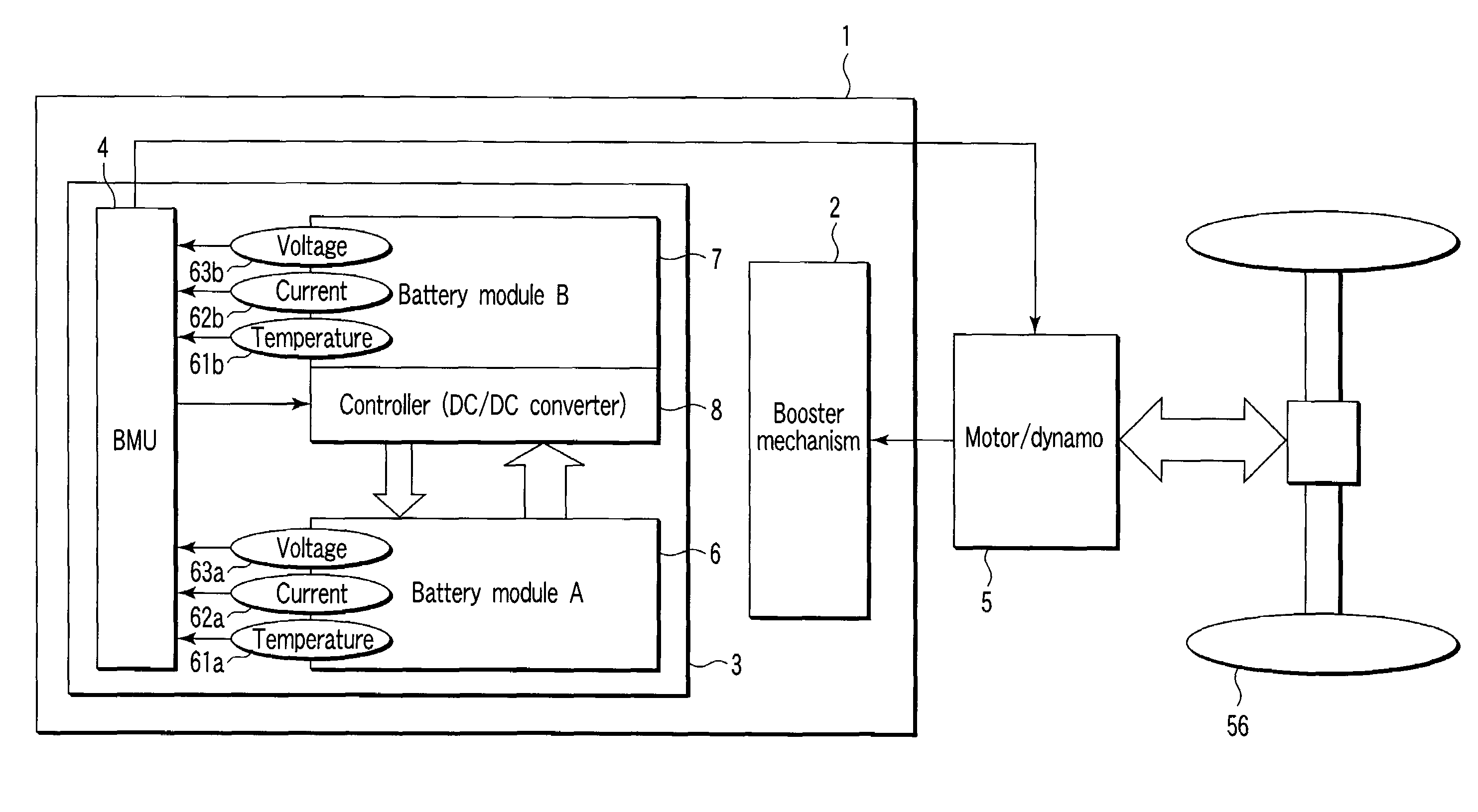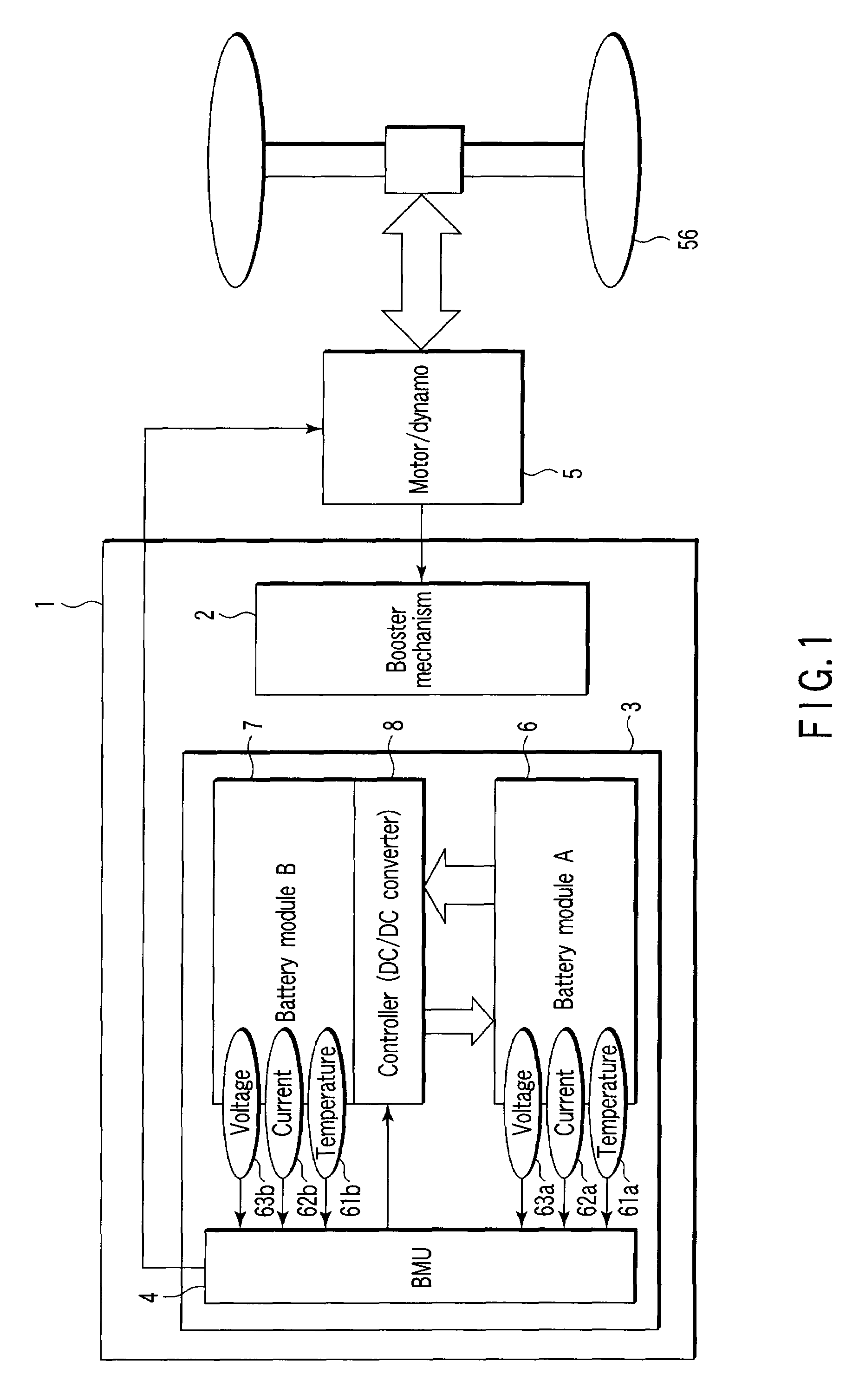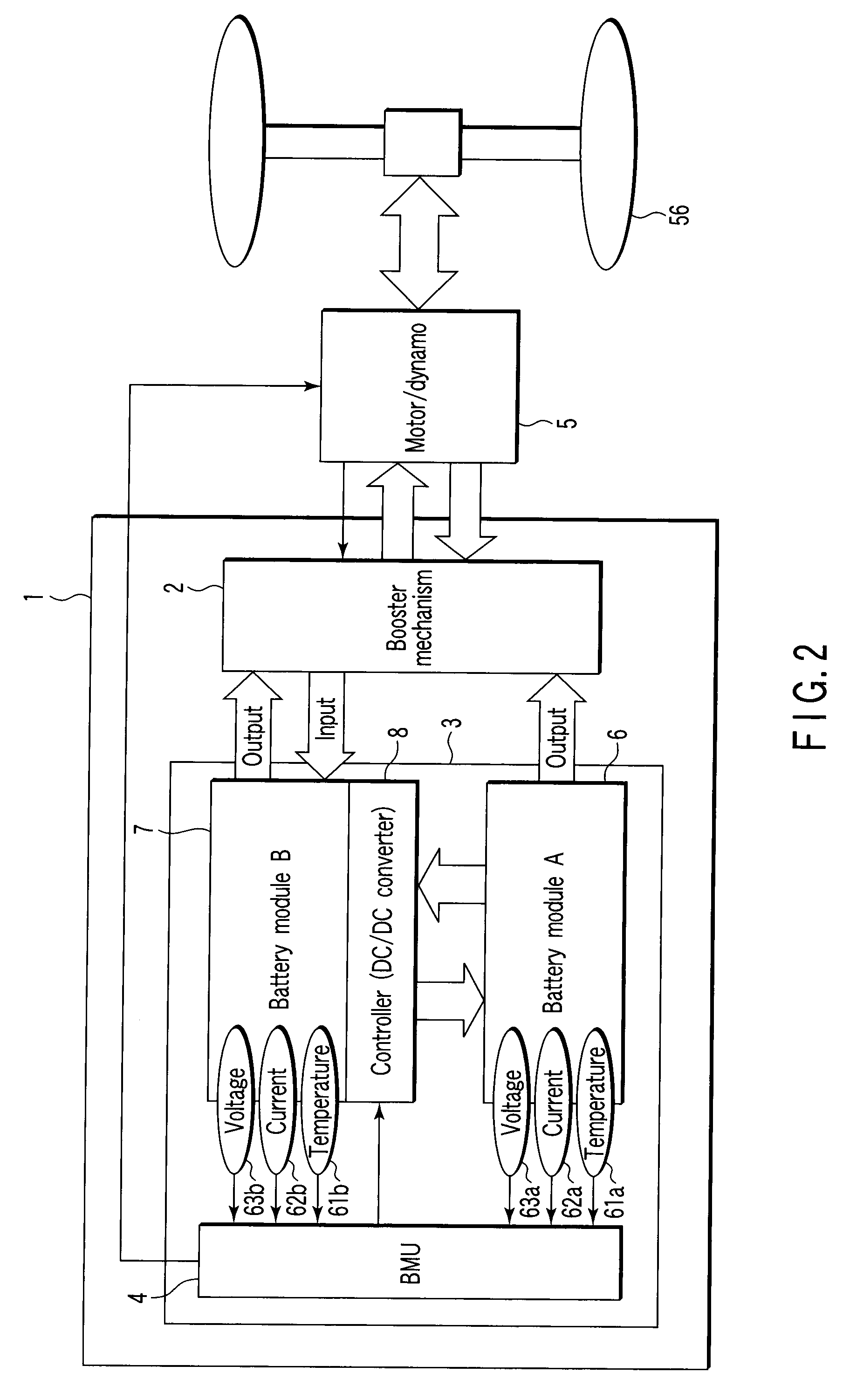Storage battery system, on-vehicle power supply system, vehicle and method for charging storage battery system
a storage battery and battery technology, applied in the direction of propulsion parts, engine-driven generators, climate sustainability, etc., can solve the problems of small electric capacity, inability to compact, and inconvenient charging, so as to achieve efficient charging and long-term discharge
- Summary
- Abstract
- Description
- Claims
- Application Information
AI Technical Summary
Benefits of technology
Problems solved by technology
Method used
Image
Examples
first embodiment
[0046]As shown in FIGS. 1 and 2, the storage battery system 1 of the first embodiment comprises a booster mechanism 2, battery modules A and B connected to the booster mechanism 2, and a battery control unit (BMU) 4 connected to the battery modules A and B. The battery module B has a module, in which a plurality of single cells formed of thin nonaqueous electrolyte secondary batteries 7 are connected parallel to each other or in series. The battery module A is intermittently connected to the battery module B parallel to each other via a controller 8, and controls the amounts of current input to and output from the battery module B. The controller B contains a DC / DC converter, and performs constant voltage control to enable power to be supplied from the battery module A to the battery module B.
[0047]FIG. 3 shows an example of a unit cell 21 as a nonaqueous electrolyte battery. An electrode group 11 has a flat, spiral structure formed of a positive electrode 12, negative electrode 13 ...
second embodiment
[0117]The storage battery system of the first embodiment is suitable for rapid charging and discharging, as well as for charging using regenerative power. Examples of this use are a power supply for digital cameras, a power supply for light vehicles such as assist bicycles, a backup power supply (uninterruptible power supply devices) for personal computers or for use in factories, and a cleaner.
[0118]A storage battery system according to a second embodiment can be made to the same structure as that of the system of the first embodiment, except for regenerative power is not used for charging. It is preferable to set the charging rate to a range of 2 C or more and 120 C or less. Incidentally, “1 C” is a current required for each unit cell to be completely discharged within an hour. For convenience, the nominal capacitance of each unit cell can be replaced with 1 C.
[0119]In the storage battery systems of the first and second embodiments, a battery pack containing, in a single case, the...
example 1
[0134]A description will be given of a method for producing the negative electrode of a second nonaqueous electrolyte battery 7 included in the battery module B. Lithium titanate (Li4Ti5O12) with an average grain size of 0.3 μm, as an active material, carbon powder with an average grain size of 0.4 μm, as a conductive agent, and polyvinylidene fluoride (PVdF) as a binding agent were mixed with a weight ratio of 90:7:3 in n-methylpyrrolidone (NMP) solvent, thereby preparing slurry. The slurry was coated on aluminum alloy foil (purity: 99.4%) with a thickness of 12 μm and an average crystal grain size of 50 μm, and the resultant structure was dried and pressed to thereby prepare a negative electrode with an electrode density of 2.4 g / cm3. The negative collector was prepared by annealing, at 200° C., aluminum alloy foil (purity: 99.4%) with a thickness of 12 μm and an average crystal grain size of 90 μm, and then cooling the resultant structure to room temperature.
[0135]A method for pr...
PUM
| Property | Measurement | Unit |
|---|---|---|
| grain size | aaaaa | aaaaa |
| grain size | aaaaa | aaaaa |
| electrical potential | aaaaa | aaaaa |
Abstract
Description
Claims
Application Information
 Login to View More
Login to View More - R&D
- Intellectual Property
- Life Sciences
- Materials
- Tech Scout
- Unparalleled Data Quality
- Higher Quality Content
- 60% Fewer Hallucinations
Browse by: Latest US Patents, China's latest patents, Technical Efficacy Thesaurus, Application Domain, Technology Topic, Popular Technical Reports.
© 2025 PatSnap. All rights reserved.Legal|Privacy policy|Modern Slavery Act Transparency Statement|Sitemap|About US| Contact US: help@patsnap.com



